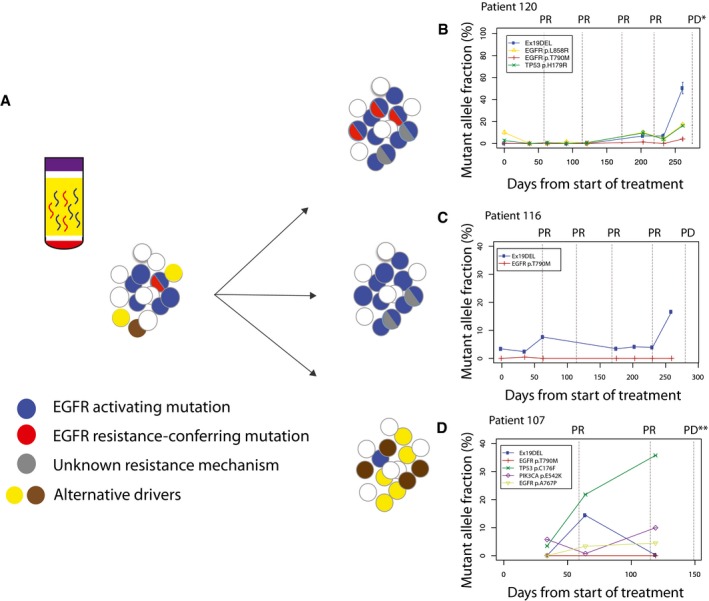Longitudinal analysis of ctDNA dynamics in 45 NSCLC patients revealed three main groups of concurrent heterogeneous resistance mechanisms.
In the first group (n = 28/45, 62%), patients retained EGFR‐sensitizing mutations before and after disease progression, with the development of T790M in their plasma samples, indicating that at least some of the progressing clones developed resistance to TKI by acquiring T790M.
In the second group (n = 10/45, 22%), patients retained EGFR‐sensitizing mutations but progressed without developing T790M in their plasma samples, suggesting that resistance arose due to other mechanisms which were not analysed in this dataset.
In the third group (n = 7/45, 15%), patients progressed without EGFR‐sensitizing nor resistance‐conferring T790M mutations detected in their plasma samples. Resistance possibly develops through dependence on alternative cancer driver pathways.
Data information: For patients where multiple
EGFR‐activating mutations were identified in plasma, only the most abundant one is shown here (complete data for all patients are shown in
Dataset EV1). Clinical progression and CT imaging times are indicated with a dotted line, with RECIST classification: SD, stable disease; PR, partial response; PD, progressive disease. Progressive disease defined by presentation of symptoms on brain or bone scan is indicated by PD**.

